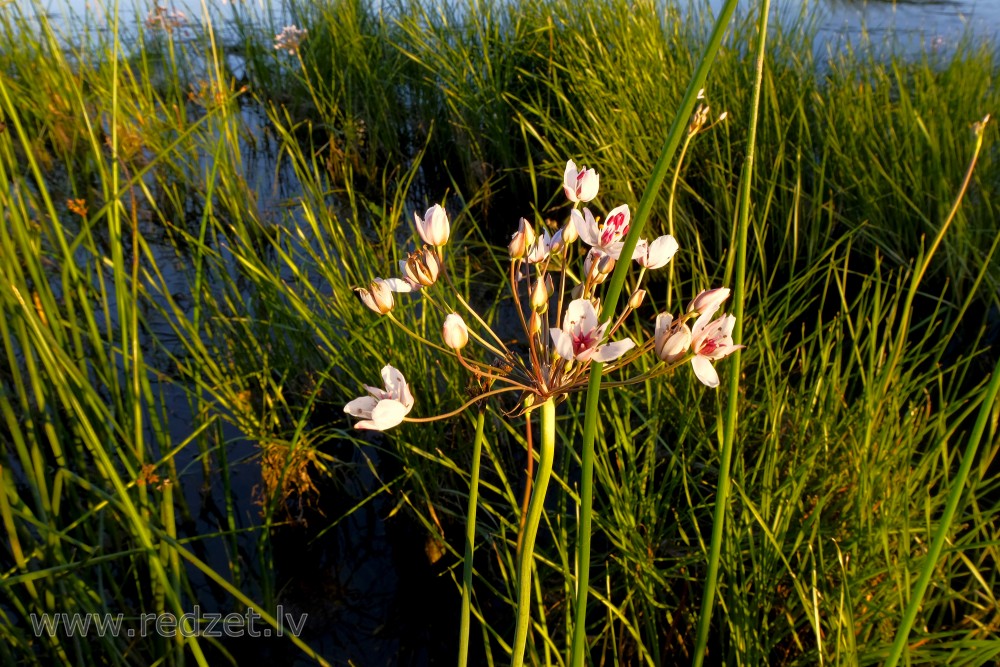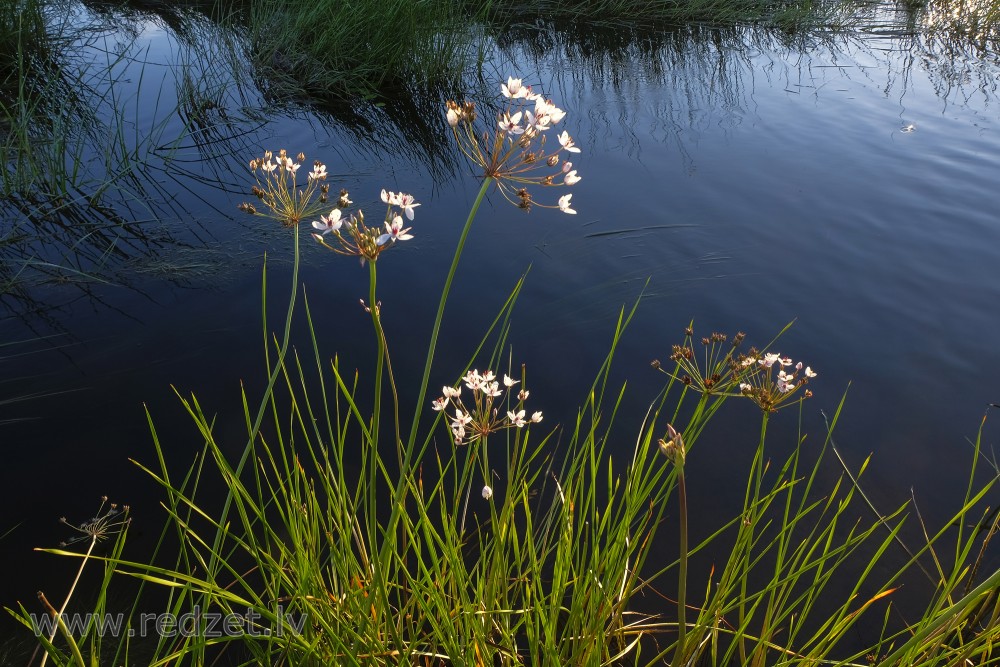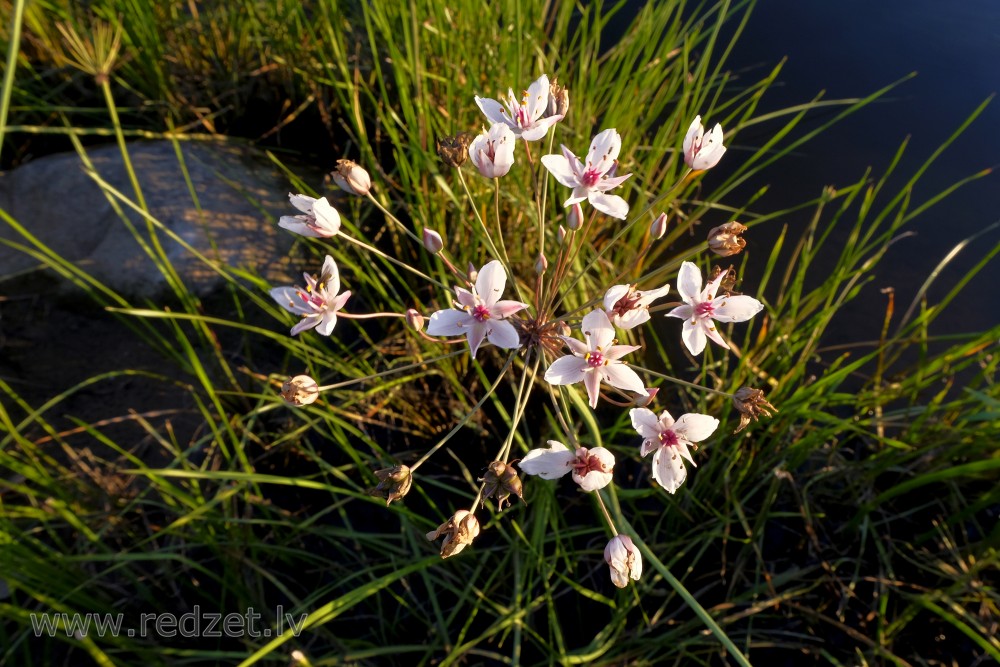Butomus umbellatus (Flowering rush)
Butomus umbellatus is the Old World Palearctic and Asian plant species in the family Butomaceae. Common names include flowering rush or grass rush.
Scientific classification
Kingdom: Plantae
Clade: Angiosperms
Clade: Monocots
Order: Alismatales
Family: Butomaceae
Genus: Butomus
Species: B. umbellatus
Description
The plant is a rhizomatous, hairless, perennial aquatic plant. Its name is derived from Greek bous, meaning "cow", "ox" etc. and tome, a cut (the verb 'temnein' meaning "to cut"), which refers to the plant's swordlike leaves.
Other than suggested by its English common name, it is not a true rush. It is native to Old World continents and grows on the margins of still and slowly moving water down to a depth of about 3 m. It has pink flowers. Introduced into North America as an ornamental plant it has now become a serious invasive weed[citation needed] in the Great Lakes area and in parts of the Pacific Northwest.[5] In Israel, one of its native countries, it is an endangered species due to the dwindling of its habitat. It can also be found in Great Britain locally, for example Butomus umbellatus at Gwent Levels SSSI on the Caldicot and Wentloog Levels.
The plant has linear, pointed leaves up to 1 metre long, or more. The leaves are triangular in cross-section and arise in two rows along the rhizome/base. They are untoothed, parallel veined and twisted.
The inflorescence is umbel-like consisting of a single terminal flower surrounded by three cymes. The flowers are regular and bisexual, 2 to 3 cm across. There are three petal-like sepals which are pink with darker veins. They persist in the fruit. The three petals are like the sepals but somewhat larger. 6 - 9 stamens. Carpels superior, 6 - 9 and slightly united at the base. When ripe they are obovoid and crowned with a persistent style. Ovules are numerous and found scattered over the inner surface of the carpel wall, except on the midrib and edges. Fruit is a follicle. The seeds have no endosperm and a straight embryo. It flowers from July until August.
en.wikipedia.org



